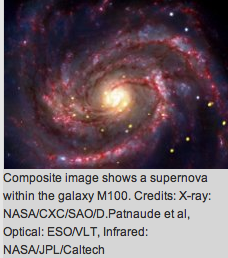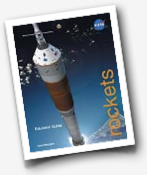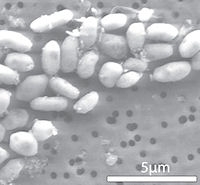NASA will hold a news conference at 2 p.m. EST on Thursday, Dec. 2, to discuss an astrobiology finding that will impact the search for evidence of extraterrestrial life. Astrobiology is the study of the origin, evolution, distribution and future of life in the universe.
The news conference will be broadcast live on NASA Television and streamed on the agency’s website at https://www.nasa.gov/ntv.
Participants are:
– Mary Voytek, director, Astrobiology Program, NASA Headquarters, Washington
– Felisa Wolfe-Simon, NASA astrobiology research fellow, U.S. Geological Survey, Menlo Park, Calif.
– Pamela Conrad, astrobiologist, NASA’s Goddard Space Flight Center, Greenbelt, Md.
– Steven Benner, distinguished fellow, Foundation for Applied Molecular Evolution, Gainesville, Fla.
Participants are:
– Mary Voytek, director, Astrobiology Program, NASA Headquarters, Washington
– Felisa Wolfe-Simon, NASA astrobiology research fellow, U.S. Geological Survey, Menlo Park, Calif.
– Pamela Conrad, astrobiologist, NASA’s Goddard Space Flight Center, Greenbelt, Md.
– Steven Benner, distinguished fellow, Foundation for Applied Molecular Evolution, Gainesville, Fla.
– James Elser, professor, Arizona State University, Tempe
 In this installment of NASA Now, you’ll meet spacecraft pilot and engineer Steven Wissler, who talks about the challenges of flying a spacecraft remotely from Earth and the excitement of being part of a team that discovers something new about comets.
In this installment of NASA Now, you’ll meet spacecraft pilot and engineer Steven Wissler, who talks about the challenges of flying a spacecraft remotely from Earth and the excitement of being part of a team that discovers something new about comets.
 Astronomers using NASA’s Chandra X-ray Observatory have found evidence of the youngest black hole known to exist in our cosmic neighborhood. The 30-year-old object provides a unique opportunity to watch a black hole develop from infancy.
Astronomers using NASA’s Chandra X-ray Observatory have found evidence of the youngest black hole known to exist in our cosmic neighborhood. The 30-year-old object provides a unique opportunity to watch a black hole develop from infancy. What may look like green slime growing on a pond is what scientists call a microbial mat. Microbial mats are living examples of the most ancient biological communities on Earth. As Earth’s earliest ecosystems, they are important to understanding the history of life on our planet and are useful models for the search for life elsewhere.
What may look like green slime growing on a pond is what scientists call a microbial mat. Microbial mats are living examples of the most ancient biological communities on Earth. As Earth’s earliest ecosystems, they are important to understanding the history of life on our planet and are useful models for the search for life elsewhere. Carrie’s, four inclusion classes must complete a class science fair project. This allows her to guide the students through the scientific method. This year their science fair project dealt with rockets, with the NASA Rockets Guide on the NES Virtual Campus as a resource. Students
Carrie’s, four inclusion classes must complete a class science fair project. This allows her to guide the students through the scientific method. This year their science fair project dealt with rockets, with the NASA Rockets Guide on the NES Virtual Campus as a resource. Students  During this week’s NASA Now program, you’ll meet Michael Studinger, Project Scientist for Operation IceBridge. He’ll describe the purpose of the IceBridge campaign and how the campaign objectives will be met. He also explains why studying Earth’s ice is important for understanding climate changes and how they related to humans.
During this week’s NASA Now program, you’ll meet Michael Studinger, Project Scientist for Operation IceBridge. He’ll describe the purpose of the IceBridge campaign and how the campaign objectives will be met. He also explains why studying Earth’s ice is important for understanding climate changes and how they related to humans. Check out part 2 of the NASA Now: A-Train series and learn how NASA uses a constellation of satellites called the A-Train to monitor the Earth system. Five NASA satellites comprise the A-Train. They fly over the same location on Earth within 15 minutes of each other collecting data about the current state of the components of the Earth system.
Check out part 2 of the NASA Now: A-Train series and learn how NASA uses a constellation of satellites called the A-Train to monitor the Earth system. Five NASA satellites comprise the A-Train. They fly over the same location on Earth within 15 minutes of each other collecting data about the current state of the components of the Earth system. Headquarters in Washington. “As we pursue our efforts to seek signs of life in the solar system, we have to think more broadly, more diversely and consider life as we do not know it.”
Headquarters in Washington. “As we pursue our efforts to seek signs of life in the solar system, we have to think more broadly, more diversely and consider life as we do not know it.”